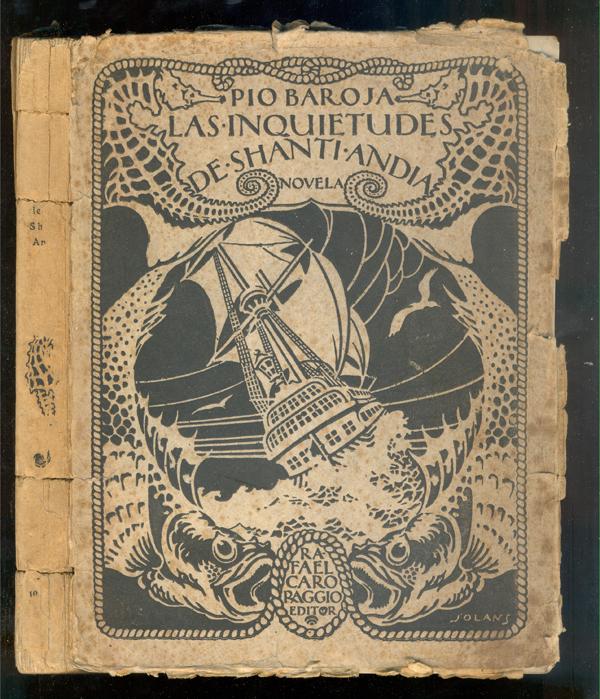
I’ve just finished reading Pío Baroja’s 1911 novel, Las inquietudes de Shanti Andia, which I read twice because the novel only makes sense if you go back to the beginning. I used an old 1970 edition, with an introduction by the famous Julio Caro Baroja, and a plethora of useless notes. I first read Shanti Andía when I was a student forty years ago and I thought it at the time unremarkable. I’ve now come back to it, unfairly perhaps, after a first encounter with Baroja’s contemporary, Joseph Conrad. Why, I asked myself, are there so many fine British novels about ships and the sea and none in Spanish? Then I remembered Baroja’s tale of Shanti, the Basque seaman. My colleague, Rory O’Bryen, came up with a few more twentieth-century examples: Alvaro Mutis’s ‘Maqroll’ novels (Colombia), published in the 1980s and 1990s; Alejo Carpentier’s El siglo de las luces (Cuba), though it’s more about revolution; possibly Cristina Peri Rossi’s La nave de los locos (Uruguay/Spain) (though the sea is largely metaphorical) and Soledad Acosta de Samper’s Los piratas en Cartagena written in 1885 (Colombia). Then there is the Spanish classic Trafalgar by Benito Pérez Galdós (1873), and Arturo Pérez Reverte’s far superior Cabo Trafalgar published in 2005, though they’re about a battle. The question remains: Conrad, Stevenson, Marryat, O’Brian, and Melville in the USA – but why are there so few nautical novels in Spanish? And hardly any in the nineteenth century? Could it be that the novel is a nineteenth-century phenomenon and by then Spain had lost interest in the oceans, while Spanish America is hardly famous for its home-grown sea captains?
Caro Baroja, in his introduction to Shanti Andía, states that Baroja was influenced by Captain Marryat, the Royal Navy Officer who published a dozen sea novels in the 1830s. But surely Baroja must have read Stevenson’s Treasure Island (1882) and possibly Conrad’s Lord Jim (1900) or Typhoon (1902), perhaps in French editions? Even in the sea stories the difference between Baroja and Conrad is immense. In his heart of hearts, Shanti Andía never leaves the shore, his sea-faring is glossed over in a sentence or two; his centre of gravity is his home, his mother and his wife. It is his uncle, Juan de Aguirre, who most resembles Conrad’s ‘masters and commanders’, whose tumultuous life takes him from the Philippines to Cadiz, Cape Verde to Plymouth and Wexford. And like Conrad, Shanti Andía laments the demise of the age of sail with wistful nostalgia. Unlike Shanti, Conrad’s seaman never leaves the sea; his place of attachment is his ship. He has no time for shore-life or for women. His world is a self-sufficient gaggle of men, thrown together from all corners of the globe, and their unexpected bravery and their tragic self-destruction when faced with the immense and inscrutable forces of nature. Their woman is their ship; they care for her, cook, clean, and steer her to safety with disciplined skill. The most unassuming of the Conrad crew are the most valiant, but it’s all in a day’s work. Unlike Baroja, Conrad was an active seaman and for this reason knows in minute detail the construction and working of ships, the daily routine and boredom and the hanging on for dear life. Baroja the Basque and Conrad the British Pole, contemporaries who wrote novels about the sea – one with an eye on his grandmother’s living room the other from the eye of the storm.
Catherine Davies, Professor of Hispanic and Latin American Studies, IMLR
